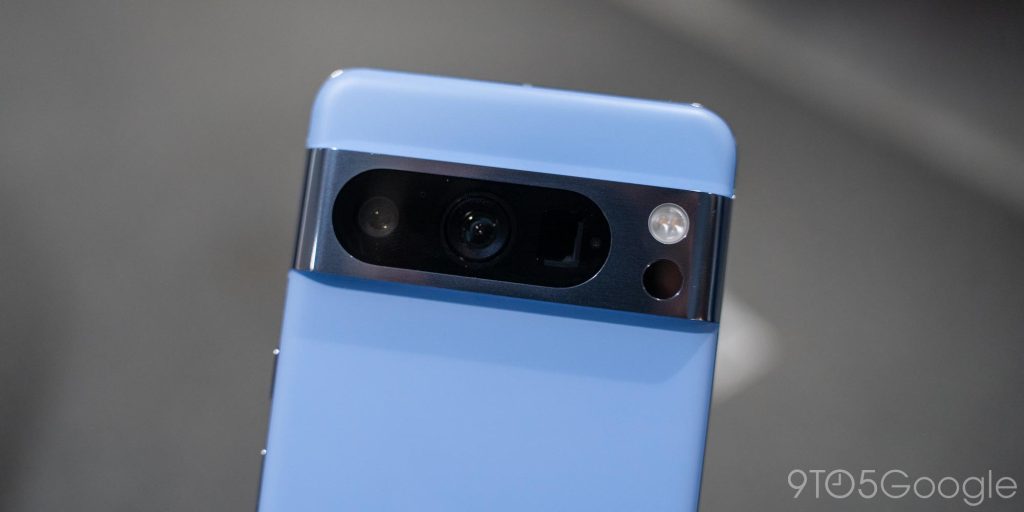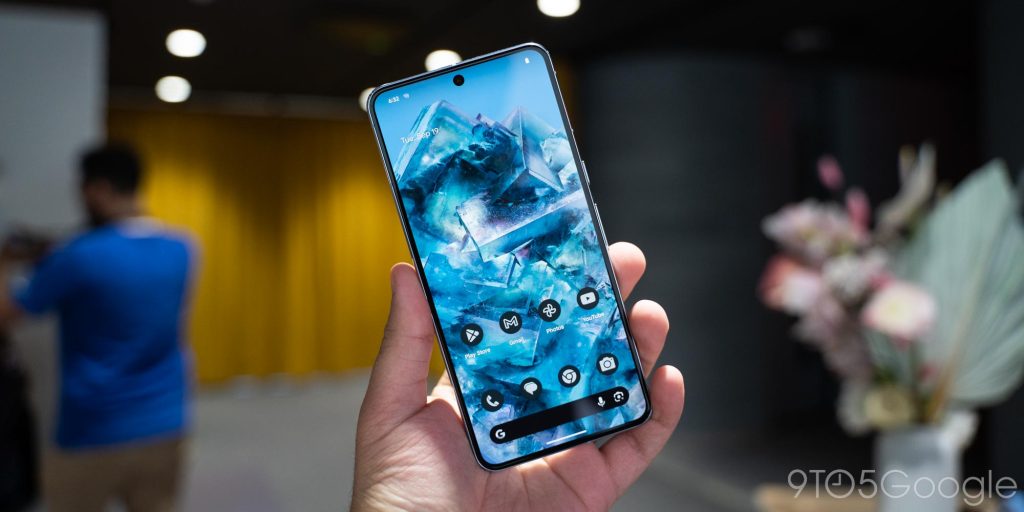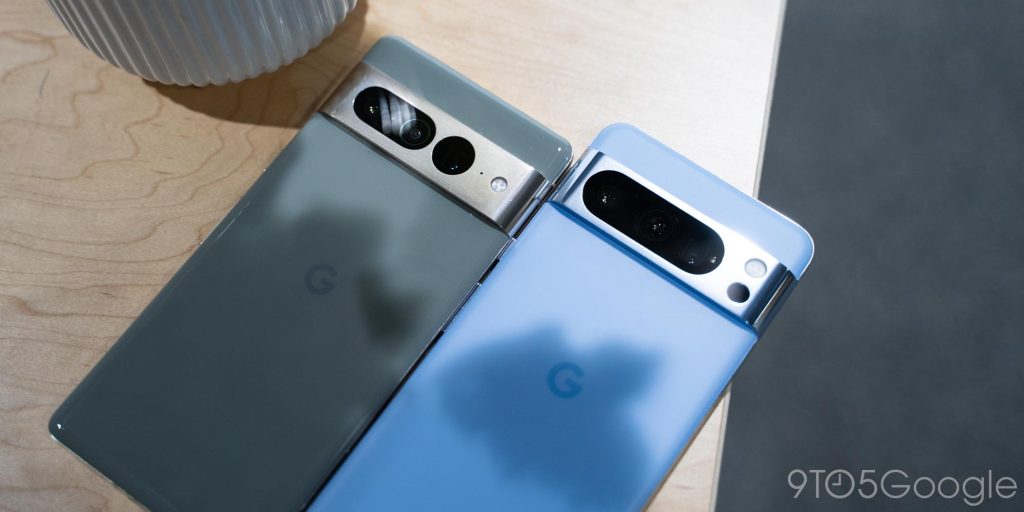
Google has seen moderate success with its reboot of the Pixel series in the “Tensor” era, but Pixel 6 and Pixel 7 series phones ultimately ended up earning a less-than-stellar reputation for issues such as overheating and signal. But with the new Pixel 8 and Pixel 8 Pro, Google is debuting what are easily the most promising Pixel phones since the original, but it all rests on whether Tensor G3 is actually the improvement it claims to be.
Pixel 8: A more well-rounded flagship for everyone
The first device we’ll talk about is the smaller Pixel 8, which continues in the legacy of being a more affordable device with the same flagship chip, but a trimmed-down experience otherwise. And, this year more than any other, I think Google has really nailed the balance.
Pixel 8 brings a few really key upgrades to the table, starting with the display. The “Actua” display is a fancy marketing word for a 120Hz panel – an overdue upgrade for sure. The 6.1-inch panel is compact and truly a delight to hold, and the quality of the display is truly wonderful despite its 1080p status. The bezels are also noticeably smaller this year, in an improvement even I, as someone who doesn’t really care about bezels, can appreciate. Something I appreciate a lot less is the continued use of glossy rear glass but, honestly, I don’t really mind at this point, especially because I know fully well that almost everyone who owns this device is going to use a case.

And, something else that’s changed this year is just the look. The Pixel 8 and Pixel 8 Pro look practically identical from the front, which I think is a good move on Google’s part. The Pixel 6 and Pixel 7 both had clear inspiration from the Pro, but they always felt very different, and not in a good way. Pixel 8, from any angle, really does feel like it’s the “little brother” to the Pro, rather than a completely separate entry in the series.
On the camera front, the new camera sensor will have to prove its worth in a full review, but things feel more on par with the Pro here in terms of hardware than we’ve seen in a while. The Pro gets a telephoto camera and Pro features, but the regular phone has the same main sensor and the addition of auto-focus on the ultrawide, which opens the door to macro photography.

The upgrades on Pixel 8 just make it feel like a more well-rounded device, rather than being a clear step down. It does, however, just throw an even bigger wrench in the whole $300 price difference.
But, let’s talk more about the other end of that spectrum.
Pixel 8 Pro: Finally earning its ‘Pro’ name
The Pixel 8 Pro. This one… it feels special.
Google’s latest Pro device brings a pretty surprising number of upgrades and exclusive features. Let’s do a quick rundown.
- 5x telephoto camera
- 48MP ultrawide camera
- Auto-focus & secure face unlock for the selfie camera
- Manual camera controls
- 50MP mode for camera
- “Super Actua” display with 1-120Hz variable refresh rate
- Gorilla Glass Victus 2
- Up to 1TB of storage
- Coming: “Video Boost” processing
That’s a pretty good list of features that separate the Pro from its “little brother.” Are some of these still a little less hardware dependant than they should be? Of course. Pro controls especially seems like a weird thing to just block entirely from the smaller phone, but at the same time, I’m still not convinced Pixels should have this anyway – an unpopular opinion I’m sure.
But, all of that said, what is it actually like to use?

I only spent a small amount of time with the Pixel 8 Pro, but I was happy with every second of it. The updated hardware with its matte back, rounded design, and long overdue flat glass “Super Actua” display feels like some of the most compelling Android hardware I’ve used in quite some time. It also feels like the most “Google-y” hardware the company has done since the Pixel 4 series. The matte glass here isn’t quite as good as it was on the Pixel 4 series, but it’s extremely close.
And, to close out, let’s spend a brief moment on the colors of the Pro. The Pixel 8 Pro comes in fairly tame “Obsidian” and “Porcelain” colors (both are pretty crowd-pleasing) but also the apparently divisive “Bay.”
The fairly vibrant blue is striking in person, and hard to translate to pictures. It’s a unique color for a smartphone, and one that I immediately fell in love with. It’s also one that stands out in any lighting conditions, and will absolutely have me questioning if I want to use a case.

Oh, and it has a thermometer. No, you shouldn’t care about that at all.
Symmetrical bezels and way better displays
Another aspect that both Pixel 8 and Pixel 8 Pro share is their general display design. The bezels across both devices are symmetrical across the sides and top and bottom. It’s a design trait that enthusiasts love and the iPhone has fully embraced and, while it’s not all that important in terms of functionality, it looks aesthetically great.
More important is the display itself. Google is launching new “Actua” displays on the Pixel 8 series, which is a fancy marketing term for just better overall displays. The panel has the same clean look that you seen on iPhones and Galaxy phones, but not as much on Pixels. The regular Pixel 8 is smaller and lacks variable refresh rate, but it’s 120Hz and is 40% brighter than Pixel 7. The Pixel 8 Pro, meanwhile, has a variable refresh rate at up to 120Hz and the same size as previous Pros, but this time with flat glass on top – finally.

As mentioned, we’ve only spent a little bit of time with the Pixel 8 and Pixel 8 Pro, but I walked away with a great impression of the displays.
The Android phone that’s finally matching iPhone on updates
Both Pixel 8 devices are seeing $100 upcharges over their predecessors, but if the new hardware doesn’t make you feel that extra cost is worthwhile, the extended software support might.
Google is providing Pixel 8 and 8 Pro with a whopping seven years of security, Feature Drop, and Android OS upgrades. That’s unprecedented in the Android space in terms of a concrete promise, blowing the Pixel’s previous 3-year/5-year promise, and even Samsung’s 4-year/5-year promise, out of the water. It also comes up to Apple’s typical support timeline, as iPhones tend to get iOS updates for around 6-8 years depending on the model and, well, how Apple feels about updating that device. In any case, it’s a major point in Pixel’s corner, and could have lasting benefits.
Even if you don’t plan to use your phone for that long – I really don’t think many people should – this extended update policy leaves the chance for Google to keep selling its phones for longer (like Apple does) and, maybe, drive up resale value by ensuring that Pixels will still have a life after they’ve been sold to someone else.
How a Pixel actually ages over seven years, we’ll have to wait and see, but this is an ambitious promise on Google’s part.

It all comes down to Tensor
Top comment by Bobba
I am so sad the by the many HW differences between Pro and non-Pro... I just want small-ish (as much as modern smartphones can be small...Remember when we used to call them phablets and sometimes made fun of them?) flagship phone. Is that really so hard?
Really, it just all comes down to Tensor G3. If Google can finally get the chip right, I think Pixel 8 and Pixel 8 Pro will easily be the best Android phones on the market. But that’s a huge if.
Tensor’s legacy thus far has been plagued with issues, heat, and just tons of problems. I genuinely hope that the underlying upgrades – Google’s won’t share specifics aside from “ARM v9” – actually stick the landing, especially given the lifecycle of these devices.
What do you still want to know about Pixel 8 and Pixel 8 Pro?
Google has pre-orders open now for Pixel 8 and Pixel 8 Pro, with prices landing at $699 and $999 respectively. Stay tuned for our full reviews right around the corner but, in the meantime, what do you still want to know?
Pixel 8 and Pixel 8 Pro are available for pre-order starting today. The Pro comes with a free Pixel Watch 2 during pre-orders, while Pixel 8 buyers get a free pair of Pixel Buds Pro. Trade-in offers can take up to $800 off of the cost of the device as well via Best Buy and other retailers.
FTC: We use income earning auto affiliate links. More.


Comments